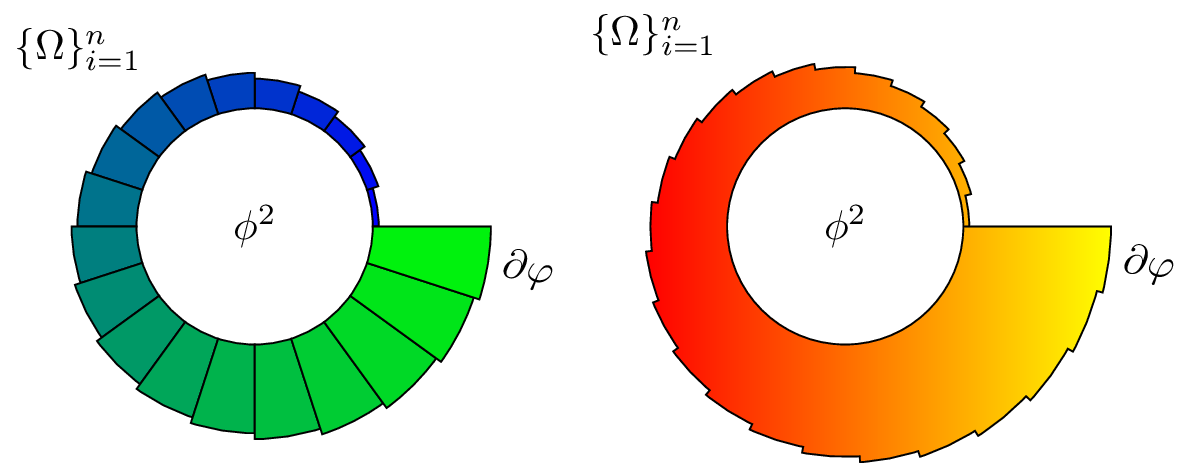This example was developed in response to the question
A rather difficult ring like picture to be drawn
on TeX.SE.
It makes use of the ext.misc library of the tikz-ext bundle of which it uses
- the
declare constantkey which is similar to thedeclare functionkey but doesn’t accepts any functions (and can be changed later on) - the
full arckey with theRpostfix operator which emulates PSTricks\segmentsfunction as well as - the
use intkey for\foreachwhich sets up a list to loop through where every element is evaluated beforehand.
The code actually draws almost the same picture.
However, in the first drawing the \foreach loop’s body is one whole TikZ path which – as demonstrated – can have different properties.
In the second drawing, the loop is actually part of the sole path (apart from the nodes) and leaves out the radial dividers.
The whole diagram is one path and can be filled/shaded as such.

\documentclass[tikz]{standalone}
\usetikzlibrary{ext.misc}
\begin{document}
\begin{tikzpicture}[
declare function={bigR(\n)=smallR+.05*\n;},
declare constant={smallR=1; segments=20;},
full arc=segments]
\foreach \iN[evaluate={\endRadius=bigR(\iN+1);}, use int=0 to segments-1]
\filldraw[fill/.pgfmath wrap={green!##1!blue}{100*\iN/segments}] (\iN R:\endRadius)
arc [radius=\endRadius, start angle=\iN R, delta angle=+1R] -- (\iN R+1R:smallR)
arc [radius=smallR, end angle=\iN R, delta angle=-1R] -- cycle;
\node {$\phi^2$};
\node at (north west:{sqrt 2 * bigR(segments/2)}) {$\{\Omega\}_{i=1}^n$};
\node[rotate=-.5R, right] at (-.5R: bigR segments) {$\partial \varphi$};
\tikzset{xshift=5cm, declare constant={segments=25;}, full arc=segments}
\filldraw[left color=red, right color=yellow] (right:smallR)
foreach \iN[evaluate={\endRadius=bigR(\iN+1);}, use int=0 to segments-1] {
-- (\iN R:\endRadius) arc[radius=\endRadius, start angle=\iN R, delta angle=1R]}
-- (right:smallR)
arc[radius=smallR, start angle=0, delta angle=-360];
\node {$\phi^2$};
\node at (north west:{sqrt 2 * bigR(segments/2)}) {$\{\Omega\}_{i=1}^n$};
\node[rotate=-.5R, right] at (-.5R: bigR segments) {$\partial \varphi$};
\end{tikzpicture}
\end{document}

